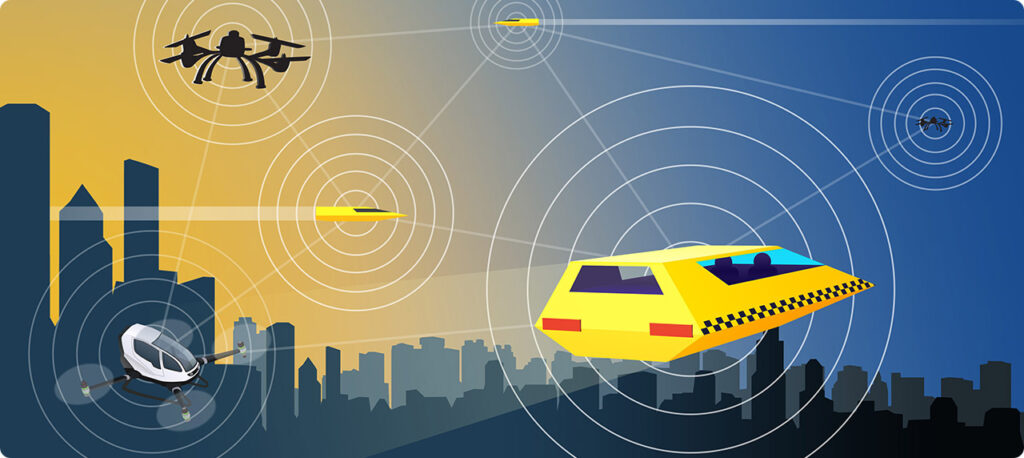Louis Whitcomb, Johns Hopkins Whiting School of Engineering
Lanier Watkins, Johns Hopkins Applied Physics Laboratory
Society is experiencing increasing density and ubiquity of autonomous unmanned aerial systems (UAS), which include unmanned rotorcraft and fixed-wing aircraft, many operating in the uncontrolled airspace below an altitude of 400 feet. The growth of UAS operating in national airspace is creating immense pressure to replace “human-inthe-loop” management and safety systems with optimized algorithms that deliver efficiencies, scale to demand, and assure reliable operations and safety. The goal of this research is to develop and evaluate prototypes of autonomous traffic-management systems to safely oversee these systems.
This research defines and prototypes algorithms for operation of autonomous multi-agent systems, integrates them into a UAS traffic management system, evaluates them under a range of conditions, and generates guidance for policy and testing methods to provide assurance. Key products of this research include (1) a modeling and simulation tool that models interacting operators, (2) technologies for performing real-time optimizations and driving emergent behavior, and (3) a roadmap for a policy and/or standard to address safety.
This research promises to advance the state of the art in the safety of large-scale aviation ecosystems, to ensure that integrating independently designed algorithms and systems will not lead to failures, and to maximize operational efficiency.
